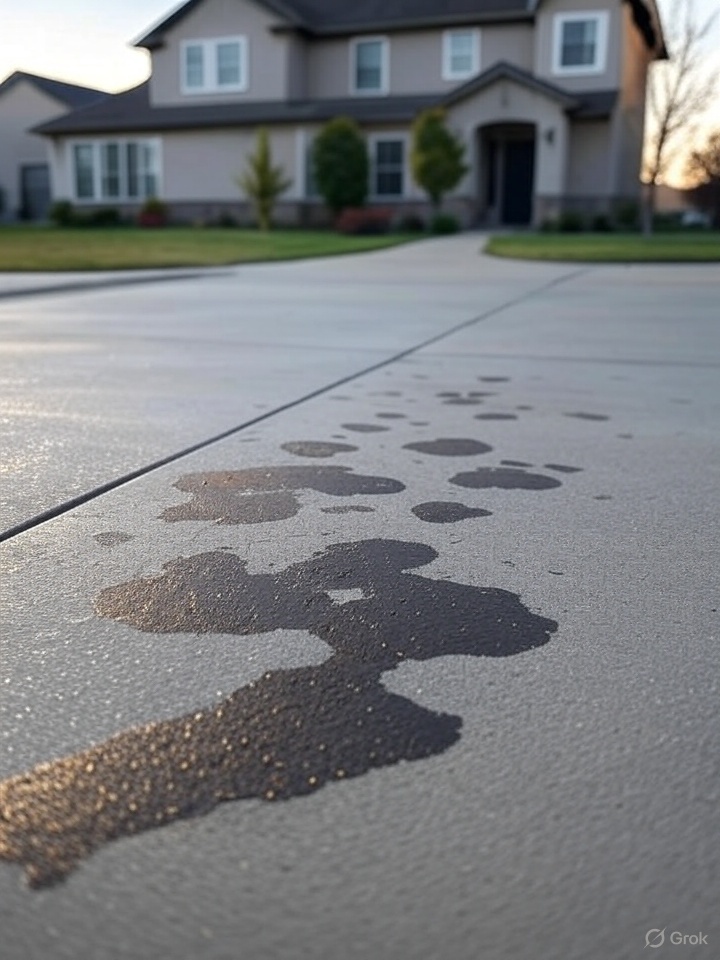Address:
Jefferson, GA 30549
Address:
Jefferson, GA 30549

Few things ruin the look of a clean driveway faster than oil stains. Whether from a leaky car, lawn equipment, or a messy spill, those dark spots can stick around long after the source is gone.
In this guide, you’ll learn what causes oil stains, how to remove them using both DIY and professional methods, and how to prevent them from coming back. Plus, you’ll get product recommendations to save you time—and find out when it might be worth calling in a pro.
What Causes Oil Stains on Driveways?
Oil stains usually come from motor oil, transmission fluid, brake fluid, or other automotive leaks. Once oil seeps into porous surfaces like concrete or asphalt, it can bond with the material and become tough to remove.
The longer the oil sits, the deeper it settles, making quick action your best bet.
Step-by-Step Guide: How to Remove Oil Stains From Your Driveway
1. Act Fast if the Spill Is Fresh
Blot up excess oil with paper towels or absorbent cloth. Avoid rubbing—it spreads the stain.
Then, apply a generous amount of cat litter, baking soda, or an absorbent like Oil Dri. Let it sit for at least an hour, then sweep it up.
2. Pre Treat With a Degreaser
Use a trusted degreaser like:
Spray it on the stained area, let it soak in for 10 to 15 minutes, and scrub it with a stiff bristle brush. Rinse thoroughly with water.
3. Try a Concrete Cleaner for Set In Stains
For deeper stains that won’t lift, use a product designed specifically for driveways such as:
Follow the product’s directions, which often involve applying, drying, and sweeping away the residue.
4. Pressure Washing for Best Results
Once you’ve treated the stain, pressure washing can lift the remaining oil. Use a 25 degree nozzle with a fan spray, and keep the wand moving to avoid damaging the surface.
A surface cleaner attachment can make this process faster and deliver more even results.
DIY Not Cutting It? When to Call a Professional
Sometimes oil stains are just too stubborn to remove with household products. If you’ve tried multiple methods and the stain is still visible, professional pressure washing might be the best solution.
Professional grade degreasers and hot water pressure washers can:
A driveway cleaning expert can also apply sealants to help prevent future stains and keep your surface looking clean longer.
How to Prevent Oil Stains in the First Place
An ounce of prevention can save you hours of scrubbing. Try these simple tips:
Products like Foundation Armor AR350 Sealer or ToughCrete Concrete Sealer help protect against oil, water, and weather damage.
Final Thoughts
Oil stains on your driveway can be frustrating, but they don’t have to be permanent. With the right products, a little elbow grease, and timely treatment, you can lift most stains and restore your driveway’s clean look.
If DIY methods are not yielding the results you want, don’t stress, professional cleaning services have the tools and experience to handle the tough stuff quickly and safely.